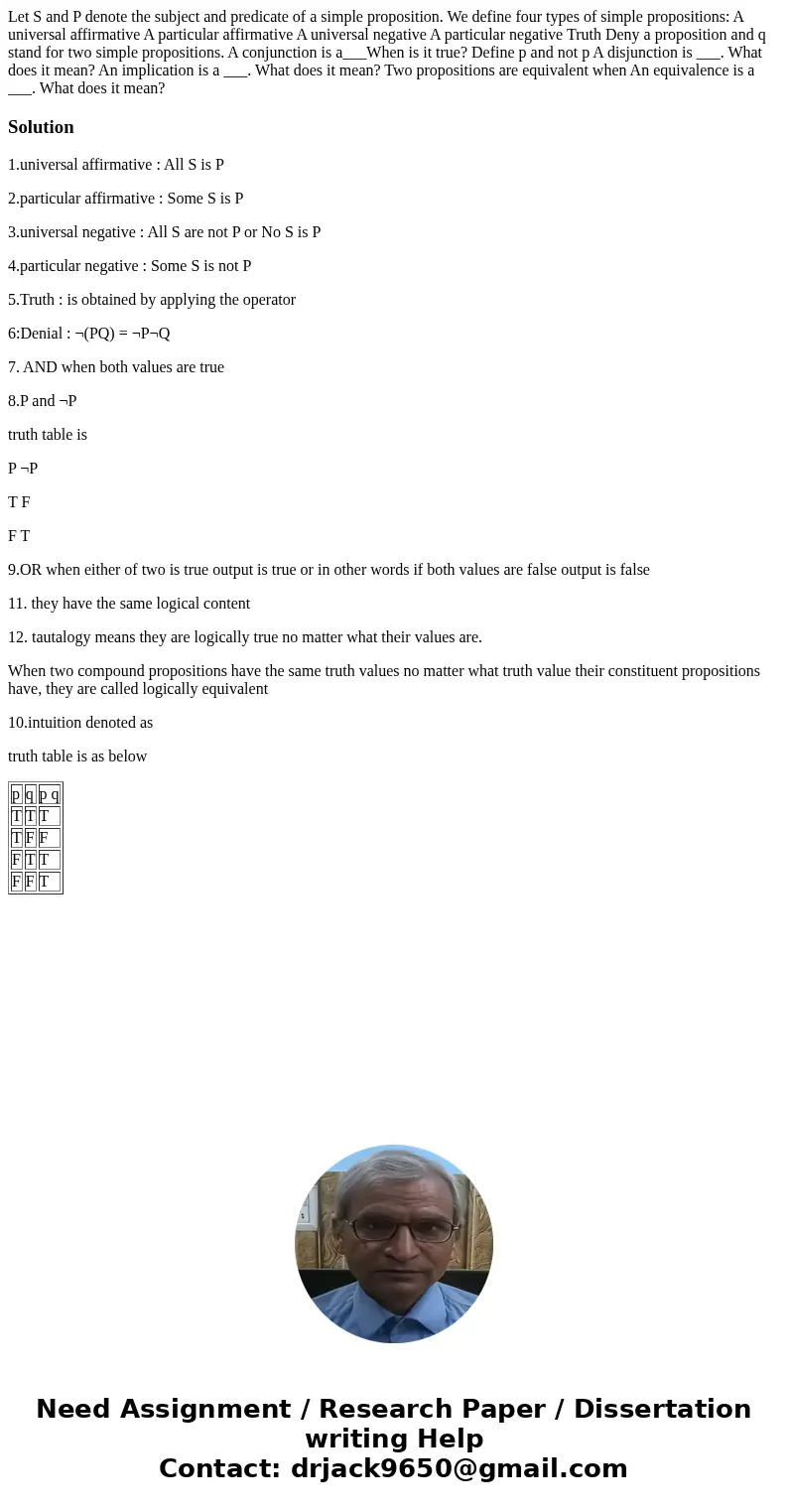Let S and P denote the subject and predicate of a simple pro
Let S and P denote the subject and predicate of a simple proposition. We define four types of simple propositions: A universal affirmative A particular affirmative A universal negative A particular negative Truth Deny a proposition and q stand for two simple propositions. A conjunction is a___When is it true? Define p and not p A disjunction is ___. What does it mean? An implication is a ___. What does it mean? Two propositions are equivalent when An equivalence is a ___. What does it mean?

Solution
1.universal affirmative : All S is P
2.particular affirmative : Some S is P
3.universal negative : All S are not P or No S is P
4.particular negative : Some S is not P
5.Truth : is obtained by applying the operator
6:Denial : ¬(PQ) = ¬P¬Q
7. AND when both values are true
8.P and ¬P
truth table is
P ¬P
T F
F T
9.OR when either of two is true output is true or in other words if both values are false output is false
11. they have the same logical content
12. tautalogy means they are logically true no matter what their values are.
When two compound propositions have the same truth values no matter what truth value their constituent propositions have, they are called logically equivalent
10.intuition denoted as
truth table is as below
| p | q | p q |
| T | T | T |
| T | F | F |
| F | T | T |
| F | F | T |

 Homework Sourse
Homework Sourse